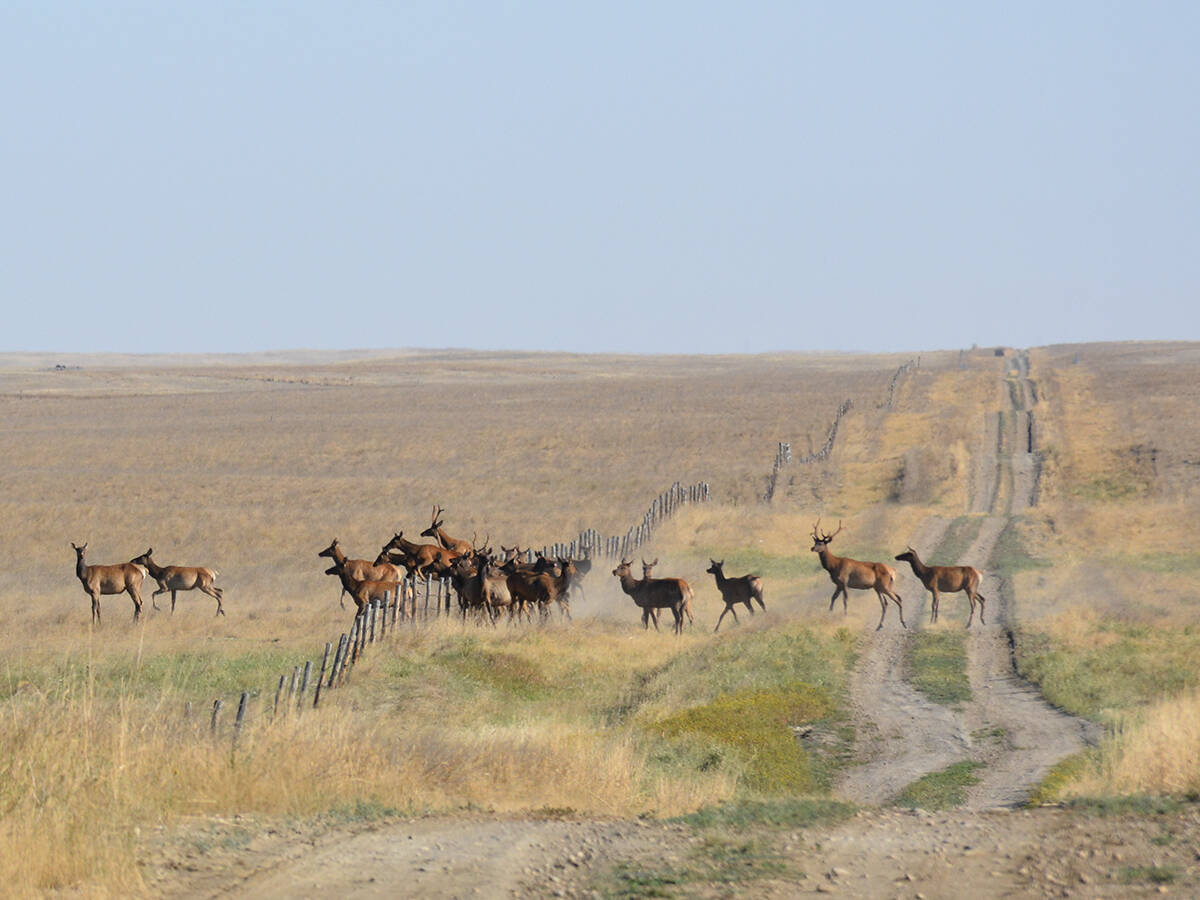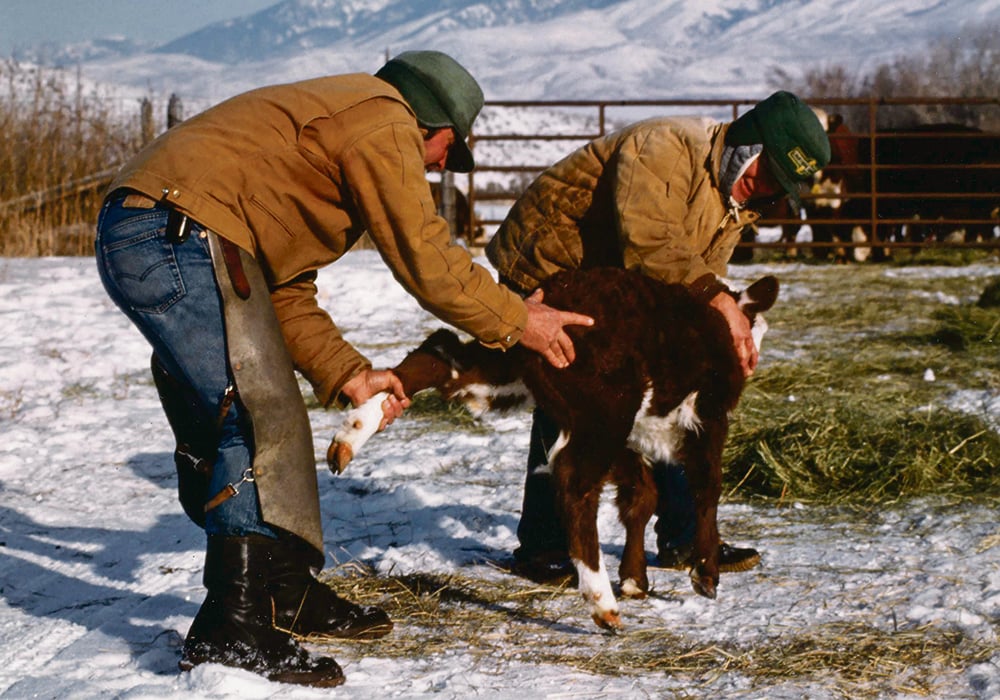Developing a good relationship with all members of the herd can help ranchers minimize stress for calves and themselves
Ideally, sick calves are detected early and treated. A weak, listless calf is easy to catch but what about the ones with mild illness that can evade capture?
Some ranchers think that a hard-to-catch calf isn’t sick enough to treat. However, a lethargic calf likely means intervention was required sooner.
It can be challenging to catch a lively calf and its possibly protective mother. Some cows are aggressive when their calves are young and can be dangerous to handlers.
In our herd, we deal with cows and calves at calving time to iodine navels, tag, band the bulls and move cows in and out of pens. That means our cows must be easy to manage.
Read Also

Planned elk hunt in Saskatchewan draws concern
The announcement of an antlerless elk hunt for one week in November has raised concerns among both Saskatchewan hunters and conservationists.
We respect a protective mother but we also demand that she respects us. Any cow that can’t be safely handled is sold. A cow smart enough to respect us can stay.
My husband or daughter and I work as a team to handle newborns and catch sick ones to treat. Most cows are not as aggressive when there are two people. I think this is partly because they know they are outnumbered and partly because they sense our confidence.
If you are not afraid of a cow, she knows it. If you are afraid, she knows that too and quickly takes advantage.
When handling cattle, be confident and act as the dominant herd boss. That’s easier if there are two people: one to fend off the cow and the other to deal with the calf.
The person keeping the cow away should have a weapon. Cows are smart. They know when you are defenseless and when you are prepared to stand your ground with a stick to whack them across the nose.
Most cows will stand back if you have a weapon they respect, just as they would halt and not threaten a more dominant cow. If a cow does not halt, her tender nose is a good target for a jab or whack with a stick.
Never hit a cow on top of the head or you may kill her, and don’t flail wildly with a whip or stick or you may injure an eye. If you have no weapon and the cow batters you, she will usually back off if you grab and twist an ear or poke her in the eye with a thumb or finger. But we don’t want a cow to get that close.
Keep dogs away when working with cows and calves. The presence of a dog, even if it stays in the pickup and doesn’t bark, can upset a cow enough to make her aggressive even before you approach the calf.
If a calf is dull and listless, you can often sneak up and grab it before it knows you are there, unless other calves nearby don’t startle at your approach and alert the sick one to your presence.
If the calf is alert and lively, we do a two-person sneak with one person at a distance to attract its attention and the other doing the grab. This usually works on a calf that hasn’t been caught before. If it has been caught and doctored before, it will be suspicious and that makes it harder to catch.
Most of our calves can be caught the first time because they are accustomed to us walking through the herd. One of us walks in front of it at a non-threatening distance. That person also distracts the calf to keep its attention and arouse its curiosity.
This might mean walking funny or waving arms a little while the other person quietly sneaks up behind the entranced animal and grabs a hind leg just above the fetlock.
The front person then grabs the head. One of us gets a good hold and the other treats the calf.
I usually straddle the calf’s neck with my legs to hold its head as I give the medication. You can often be finished before mama even knows about it, if the cows are busy eating. But if the calf bellows and all the mamas come running, be prepared to fend them off.
If a calf is too big to catch, or suspicious because it’s been caught before and needs further care, we put cow and calf in a small pen where we can corner the calf.
If a calf is far from a corral and needs only one treatment, a shepherd’s crook can be useful. We put a longer handle on it to snag a calf’s hind leg without getting so close.
The two-person decoy distraction allows the calf-snagger to get into position and catch a hind leg with the hook. A small calf that’s too wild or suspicious to grab by hand can usually be caught with the hook.
It takes strength to hang onto a big calf with the hook and some may kick out of it. There are catching hooks made for calves that have a mechanism that locks onto the leg, making it impossible to kick free.
Another way to catch an elusive calf is to ease it behind a solid gate and catch it in the narrow V made by the gate and the fence. If there is no sturdy gate available, we may herd the calf between a fence and the feed truck, after parking the truck against the fence at an angle.
This works best if stringing hay close to the fence so other cows and calves are nearby. A calf won’t get as suspicious if it is close to other cattle that are clustered near the feed.
Heather Smith Thomas is a writer who ranches with her family near Salmon, Idaho.

















